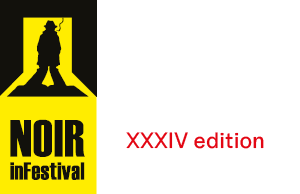
Jointly organized with the Casa Manzoni and the Centro Nazionale Studi Manzoniani. Conceived and coordinated by Cinzia Masòtina and Marina Fabbri
Should Italian noir novels, taken as civic storytelling – that is, stories of the individual’s struggle to survive in a society dominated by the power of evil – look to author Alessandro Manzoni as their most illustrious and direct ancestor?
It is well known that Manzoni had an enormous influence on the education of many twentieth-century Italian writers. Carlo Emilio Gadda and Leonardo Sciascia, to name just two, were both associated with the genre, albeit in different ways.
Held to be the founding father of contemporary noir fiction with a social-political subtext, and an early winner of our festival’s Raymond Chandler Award, Leonardo Sciascia made no bones about his admiration for the great 19th-century novelist from Milan: “if you asked me which school of writers I belong to, and I had to provide one name alone, I wouldn’t hesitate to name Manzoni”. Indeed, his classic, The Betrothed, is an infallible portrait of Italy the way it was and still is today: a country that would later be described by Federico De Roberto in The Viceroys, Luigi Pirandello in The Old and the Young, Vitaliano Brancati in Il vecchio con gli stivali, and Sciascia himself.
Even an expert interpreter of the genre such as Luca Crovi, in his 2020 Storia del giallo italiano, recognized that The Betrothed was a noir novel ahead of its time by its plot alone: “Just think of a gangster who falls for a beautiful girl and will do anything to win her heart,” Crovi writes. “Threats or blackmail won’t stop him. He simply turns to his trusty henchmen and has them threaten a priest and blackmail the maiden, and of course the idea is also to eliminate the girl’s fiancé. And if you throw in a diabolical female killer shut up in a convent or a Godfather type lurking in the shadows to further debauch the object of the gangster’s affection, you’ll realize we’re in the middle of a modern-day noir with characters named Lucia, Don Rodrigo, i ‘Bravi’, Don Abbondio, the Nun of Monza, and l’Innominato.”
Among the characters created, recreated, or inspired by the story in The Betrothed, fighting against the powers-that-be or defending themselves from them, the female character Sister Gertrude, the Nun of Monza, stands out. She was based on a real-life Sister Virginia Maria, born Marianna De Leyva in Milan’s Palazzo Marino in late 1575, walled up in a convent at age thirteen by her father, then tortured, put on trial, and handed a thirteen-year sentence at the Convent of Santa Valeria, just like common criminals and prostitutes.
Hers was a story of patriarchal violence and the moral depravity of certain authorities of the day: a tale of murder, lies, and the hypocrisy of an entire century dominated by religious obscurantism.
All this and more will be discussed by scholars and other experts who have examined the literary and moral legacy of Manzoni, such as Mauro Novelli and Daniela Brogi, or else have filtered that legacy through the noir genre, like Luca Crovi. Along with noir authors who have turned to or simply felt the influence of the historical novel genre, such as Ben Pastor, Marcello Simoni, Marina Marazza, and Giancarlo De Cataldo, but also filmmakers of the caliber of Marco Bellocchio. The latter has recently dissected 19th-century clericalism in his film Kidnapped, and has an earlier film to his credit – Blood of My Blood (2015) – about a similar case of forced nunhood in his native Bobbio in the 17th century, not so very different from the one in Manzoni’s masterpiece.


